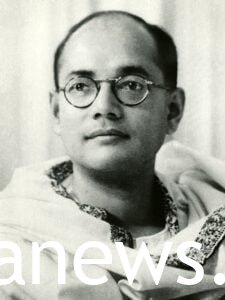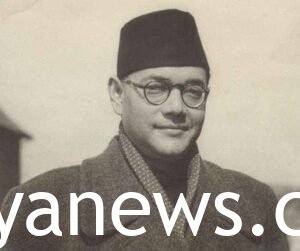Subhash Chandra Bose: Subhash Chandra Bose, a prominent figure in India’s struggle for independence, is often celebrated for his fearless approach and commitment to the cause. While many know him as “Netaji,” there are some lesser-known aspects of his life that add more layers to his fascinating persona. Here are 13 interesting and untold facts about Subhash Chandra Bose:
1. Early Academic Brilliance
Subhash Chandra Bose displayed brilliance from a young age. He secured the fourth position in the Indian Civil Service (ICS) examination at the age of 23, but his nationalistic fervor led him to resign from the coveted position in 1921.

2. Europe Beckoned
Bose traveled to Europe in 1933 to learn about governance and administration. He was deeply influenced by the ideals of Italian fascism and believed that authoritarian rule might be necessary for India’s progress.
3. Alliance with Axis Powers
During World War II, Bose sought foreign assistance to free India from British rule. Surprisingly, he formed alliances with Axis powers, including Nazi Germany and Imperial Japan, to further his cause.
4. Azad Hind Radio
To reach out to the masses, Bose established the Azad Hind Radio in Germany, broadcasting messages of independence and nationalist fervor. The radio became a powerful tool for connecting with Indians both in the homeland and abroad.
5. The Great Escape
Bose’s escape from house arrest in Calcutta in 1941 is the stuff of legends. Disguised as a Pathan, he traveled across the country, eventually reaching Germany. This daring escape showcased his determination and resourcefulness.

6. Provisional Government of Free India
In 1943, Bose established the Provisional Government of Free India in Singapore, with himself as the head. This marked the first time an Indian leader had declared independence from British rule.
7. Women’s Regiment
Bose was a pioneer in recognizing the role of women in the armed forces. He established the Rani of Jhansi Regiment, an all-female unit named after the iconic warrior queen, to contribute to the freedom struggle.
8. Mystery Surrounding Death
The circumstances surrounding Bose’s death in a plane crash in 1945 remain shrouded in mystery. While the official version suggests that he died in Taiwan, various conspiracy theories speculate on his survival and subsequent disappearance.
9. Personal Sacrifices
Bose’s dedication to the cause of independence is evident in his personal sacrifices. He left behind a flourishing career, faced imprisonment, and risked his life multiple times for the greater good of the nation.
10. International Recognition
Bose’s influence extended beyond India. He was regarded as the ‘Leader of Free India’ by several countries, including Germany, Japan, and Italy, showcasing his global impact during the tumultuous times of World War II.
11. The INA Trials
After the war, the British held the INA trials in India, aiming to quash the rising tide of nationalism. The trials, however, had the opposite effect, igniting widespread protests and strengthening the demand for India’s independence.

12. Bose and Gandhi
Despite ideological differences, Bose and Mahatma Gandhi shared a mutual respect. Bose called Gandhi the “Father of the Nation” and sought his guidance, while Gandhi acknowledged Bose’s sincerity and commitment to the cause.
13. Legacy and Commemoration
Subhash Chandra Bose’s legacy lives on in various forms. The Netaji Subhas Chandra Bose International Airport in Kolkata and the National Institute of Technology in Rourkela, among other institutions, bear his name, ensuring that his contributions to India’s freedom struggle are not forgotten.
Subhash Chandra Bose’s life was a tapestry of determination, sacrifice, and leadership. These 13 facts shed light on the lesser-known aspects of his remarkable journey, adding more depth to the narrative of one of India’s most iconic freedom fighters.
WRITTEN BY COLLINS

